America couldn’t get enough of the space race in the late ’50s and early ’60s—seemingly everything carried the theme, from consumer products to TV programming to design. Ford eagerly got into the mix, and introduced the Galaxie as the top trim name for the Fairlane 500 in 1959. The Galaxie became its own model the following year and didn’t look back. Now, as collector cars, Galaxies have quietly increased significantly.

The Galaxie found itself in constant evolution after it branched off from the Fairlane. Its debut in 1960 presented a step away from the frippery of 1950s design and toward a cleaner, more streamlined look. A swath of engines were available, from a 223-cubic inch straight six to a trio of powerful 352-cubic inch V-8s. Despite the new look and power under the hood, however, sales tumbled to 289,268 from 1959’s 464,100. Couple that with the fact that cross-town Chevy had a winner on its hands in its full-size cars, particularly the Impala, Ford had to stay on its toes and decided on an immediate update.
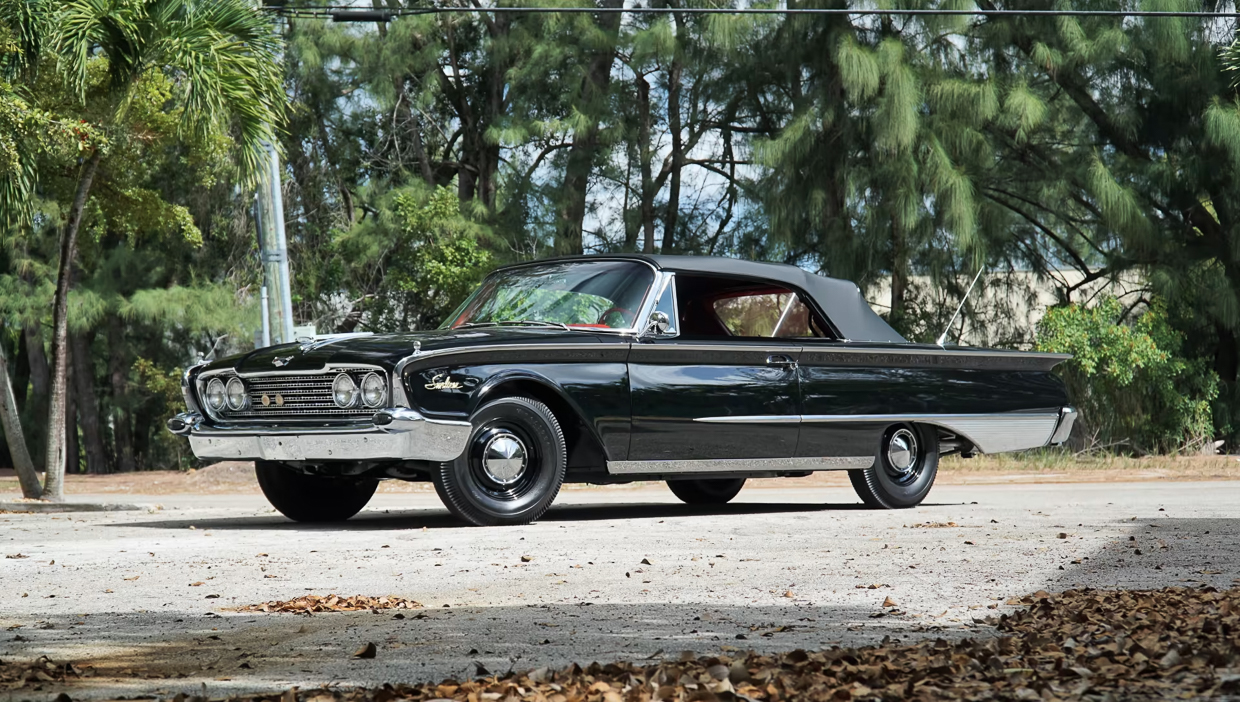
1961 brought styling that could be considered less distinctive but more in line with conventional tastes. Full-round taillights came back, and the fins, while still carrying a style line from the front door to the back of the car, grew more vestigial. Up front, the grille’s shape was simplified. Alongside these updates came the availability of the 390-cubic inch FE V-8 making 375 horsepower. Stronger still was the 6V 390, which was Ford’s odd way of sharing that the engine came with three two-barrel carburetors sitting atop an aluminum intake manifold. In this guise, the 390 made 401 horses and 430 lb-ft of torque. Production began to rebound, falling just shy of 350,000 units.
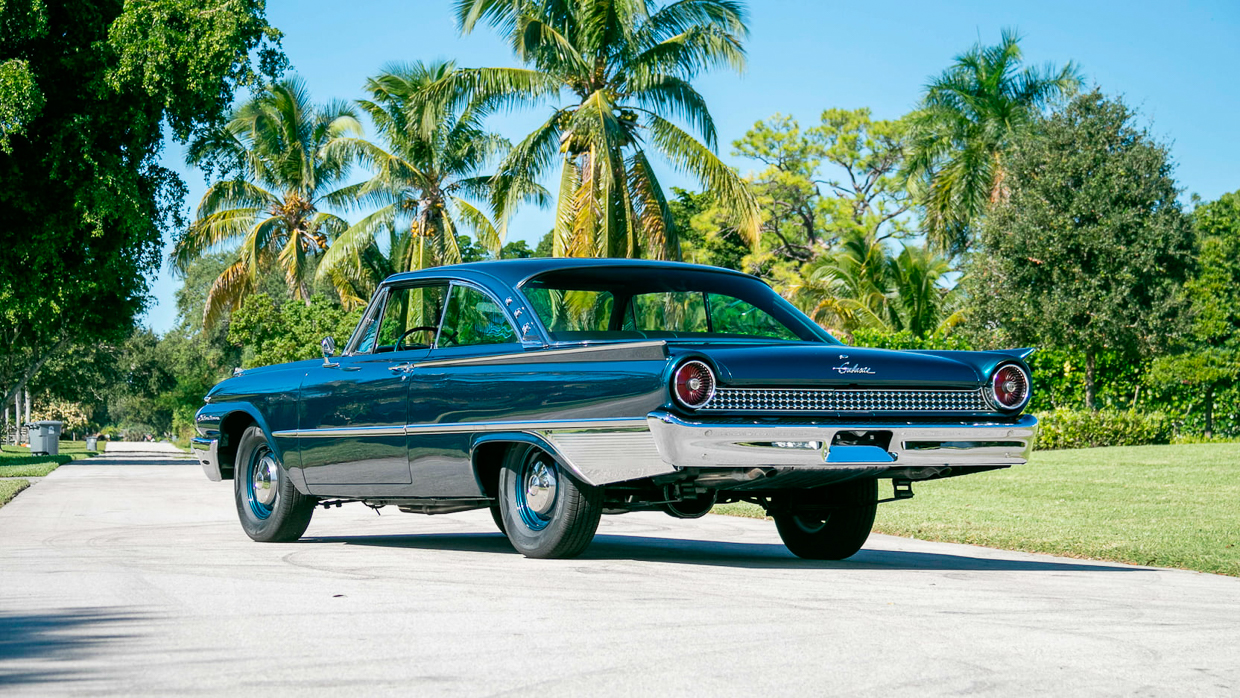
Fins left the Galaxie for good in 1962, the same year that brought the phrase “Xtra Lively” into the mix. That’s what the XL stood for in the new 500 XL trim, which positioned itself against the Impala SS. The 500 XL featured sportier finishes inside and out, along with standard bucket seats and a center console. Two versions of the 406 cubic-inch V-8 became available, though the 352 and 390 mills remained.
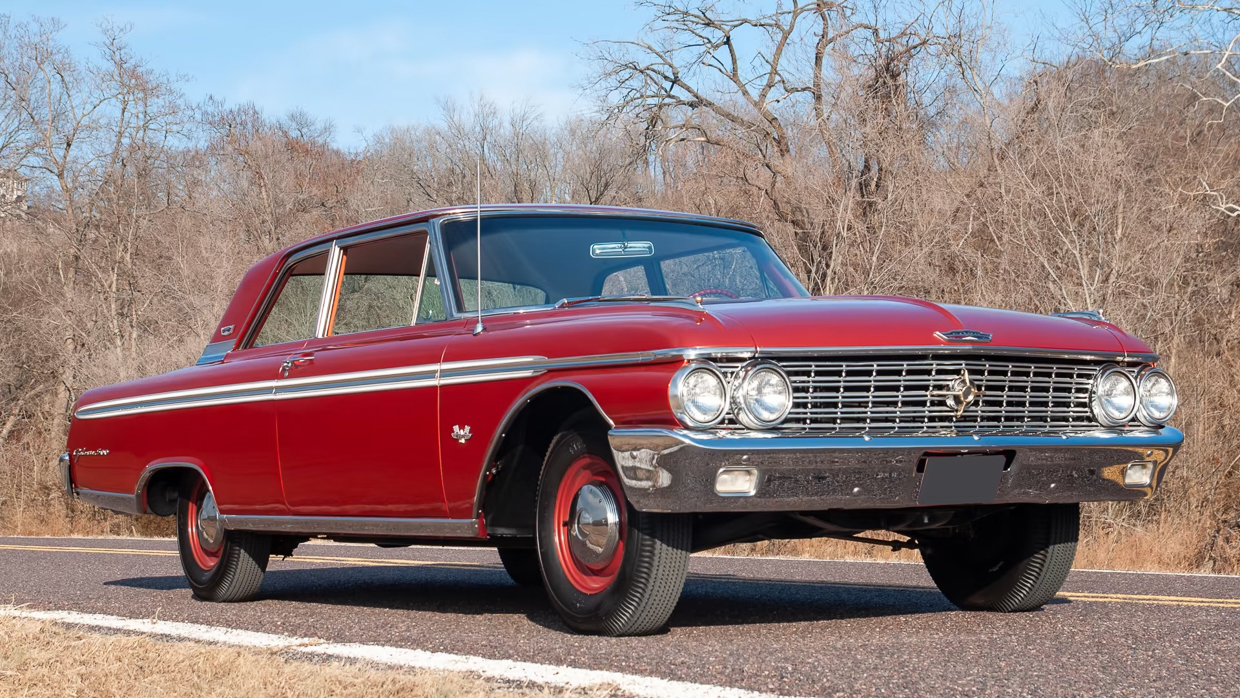
1963 was a big year for the Galaxie. Sales, which had been trending upward with Ford’s constant tweaks, peaked that year at 648,010 cars. It was also when Ford introduced the “Total Performance” marketing campaign for the brand, and the famous 427-cubic inch V-8 between the Galaxie’s front fenders. The Sports Hardtop, with a more-raked-but-not-quite-fastback treatment to the rear roofline became available as well, helping Galaxie-driving NHRA and NASCAR teams with a welcome aerodynamic complement to the added power of the 427. The Galaxie was now a force to be reckoned with on the sales sheets and the track.
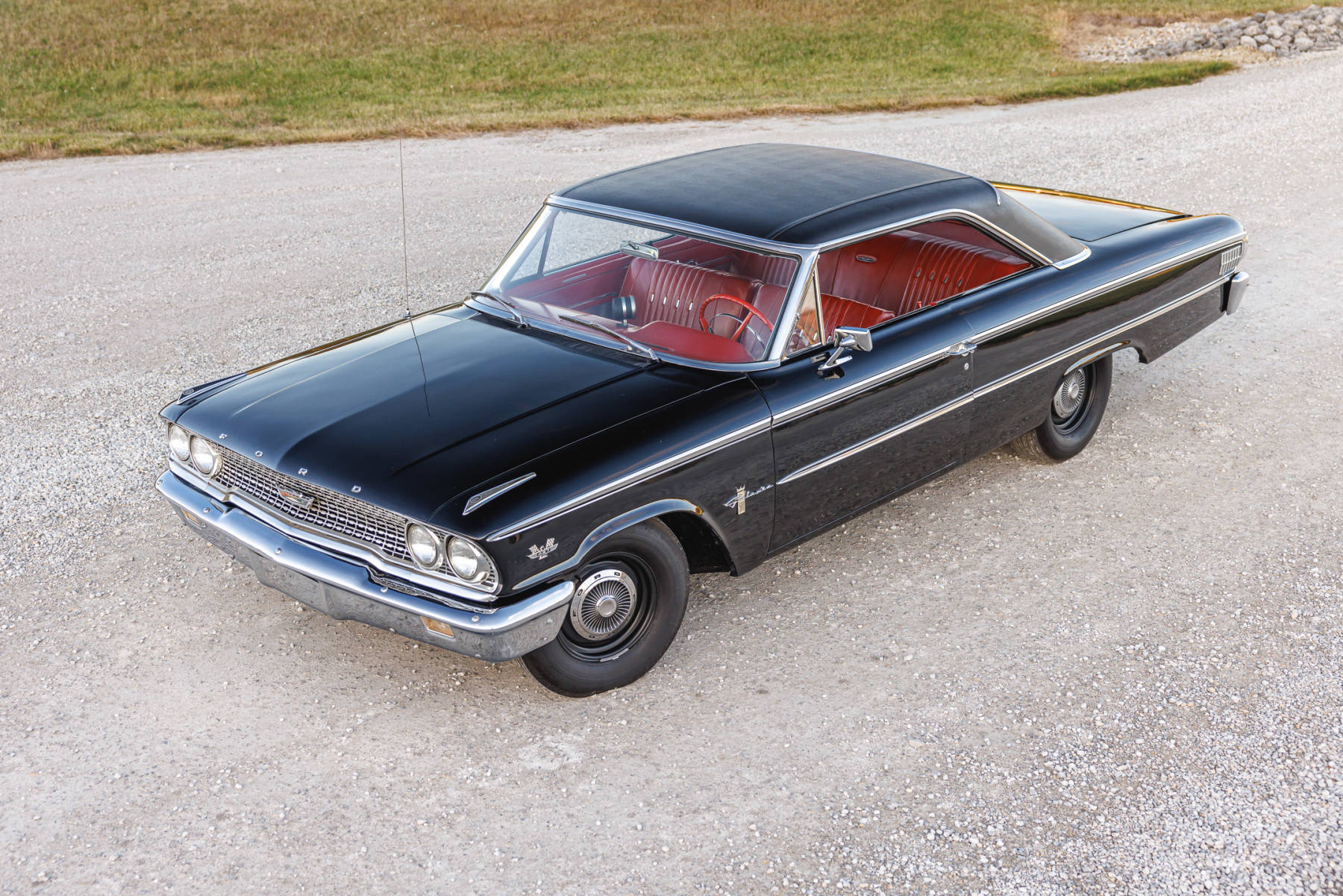
With the winning formula determined, Ford only made minor visual changes in the ‘64 model year, the final one of the Galaxie’s second generation. The Sports Hardtop became the standard roof design for all non-wagon, fixed-roof Galaxies, and engine choices remained the same as those from 1963.
These regular improvements in the breed (and GM’s official withdrawal from racing) led to more than a couple of trophies for the Galaxie. Perhaps its biggest victory came at the hands of Dewayne “Tiny” Lund at the 1963 Daytona 500. Lund got his chance to race for the Wood Brothers that year after their driver, Marvin Panch, was injured in a sports racer ahead of the 500. Ford finished first through fifth that year, boosting the Galaxie’s popularity, while Lund’s win helped set the course for the Wood Brothers to secure the NASCAR Owner’s Title.
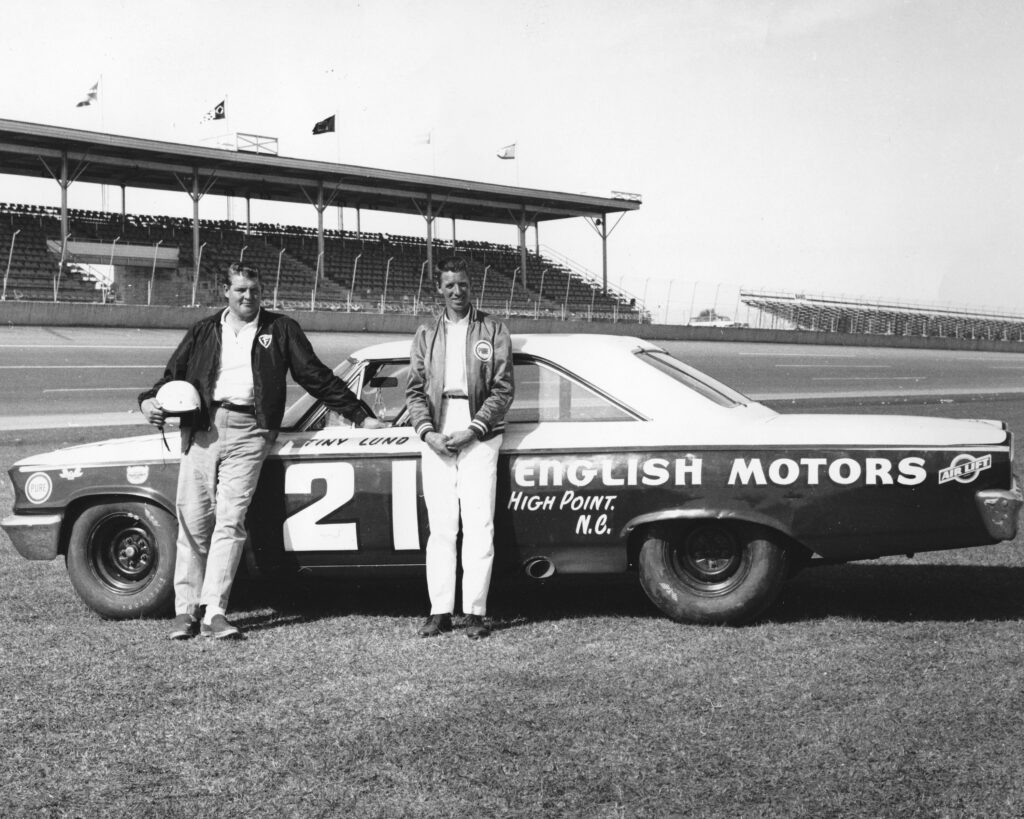
The Galaxie’s prowess wasn’t limited to turning left or hitting the quarter mile, however. Jack Sears piloted a ’63 Galaxie (as well as a Jag and a Mini) to the British Saloon Car Championship. In a beautiful display of period saloon car racing, touring car pilot Sam Tordoff’s impressive drive from last to third in 2020’s Goodwood Speedweek is an ample reminder that big doesn’t have to mean unwieldy.
Despite its capability, the Galaxie isn’t widely considered as popular a canvas for customization as the Impala. While not all Hagerty insurance policies indicate modifications, 6.7 percent of ’60-’64 Galaxies are noted as modified, while 12.7 percent of ’61-’64 Impalas are so listed. Interestingly, values for both suggest that modified examples are more prized than those left stock, with values for modified Galaxies and Impalas sitting at 37 and 45 percent higher, respectively.
Speaking of values, between engine choices, body styles, and trims within the Galaxie’s second generation, we could create dozens of valuation charts. To simplify things, we picked #2 (Excellent) condition values for three coupes—which, along with convertibles are at the top of the valuation heap in terms of body selection—using varying trim and engine choices from the final year, 1964. Naturally, 427-powered cars lead the way, and they have done so to a dramatic degree, skyrocketing over 65 percent in value since the beginning of the pandemic boom. More entry-level cars with the 392- and 352-cubic inch engines have also seen healthy bumps in value, but crucially, all have held their place in orbit even as the market has cooled over the last year. The average value for Galaxies listed with Hagerty in 2023 is about $21,800, so despite some flashy numbers up top, it is possible to get into this big Ford for reasonable money.
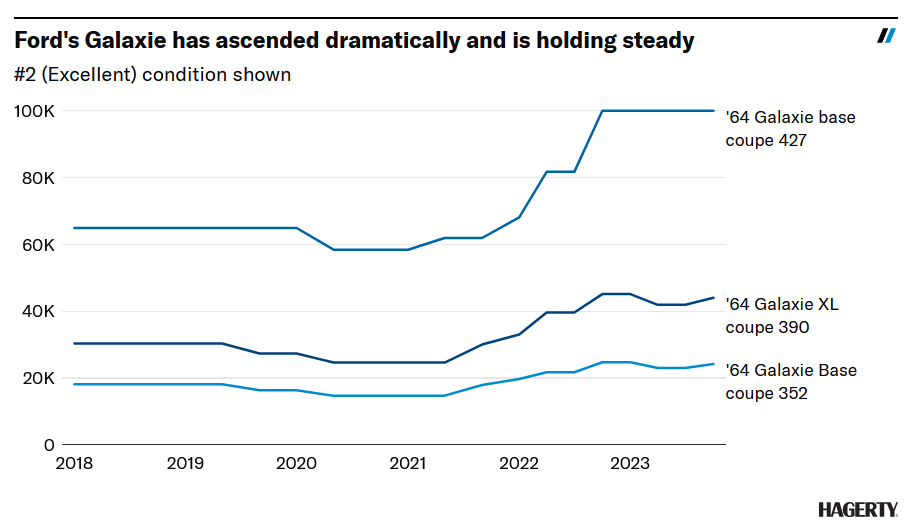
Quote data, a metric we use to infer who is buying specific models, has risen among Gen X and younger buyers for the Galaxie over the last four years. Gen X interest is up just under seven percentage points since 2020, while millennial and Gen Z interest is up about four percentage points. That said, interest in the Galaxie among folks under 40 still lags their overall share of the market.
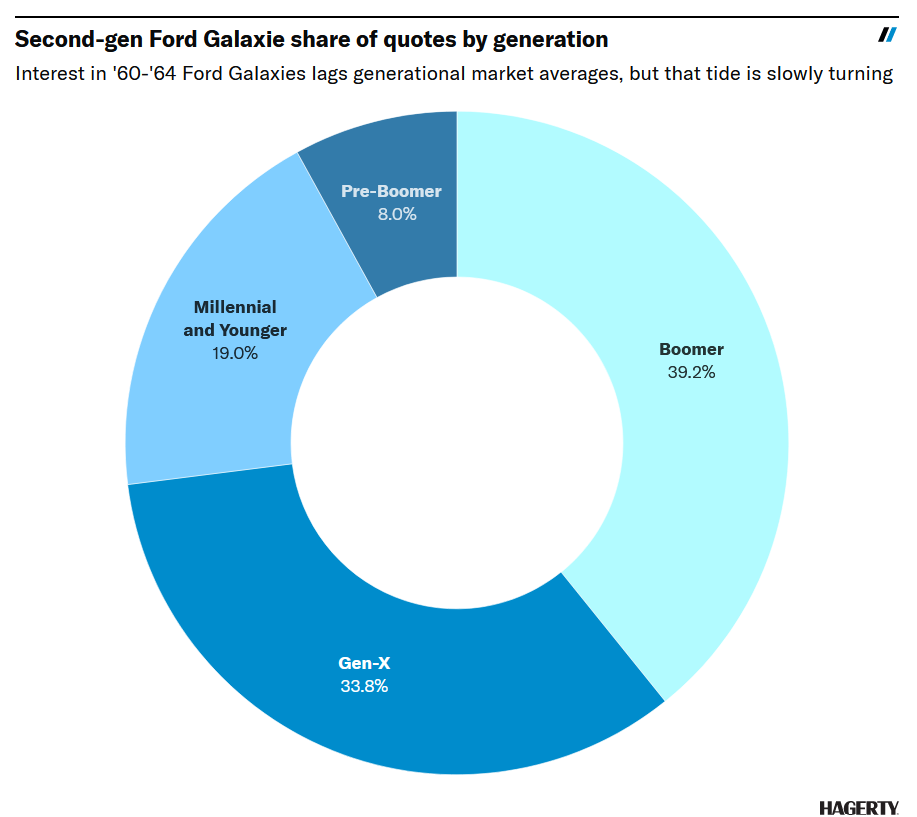
These early Galaxies proved their mettle through regular refinement and evolution. Their proven reputation on track didn’t hurt, either. While the Galaxie might not be as emblematic of its era as the Impala, their values have demonstrated that enthusiasts believe Galaxies belong in the firmament of full-size muscle.
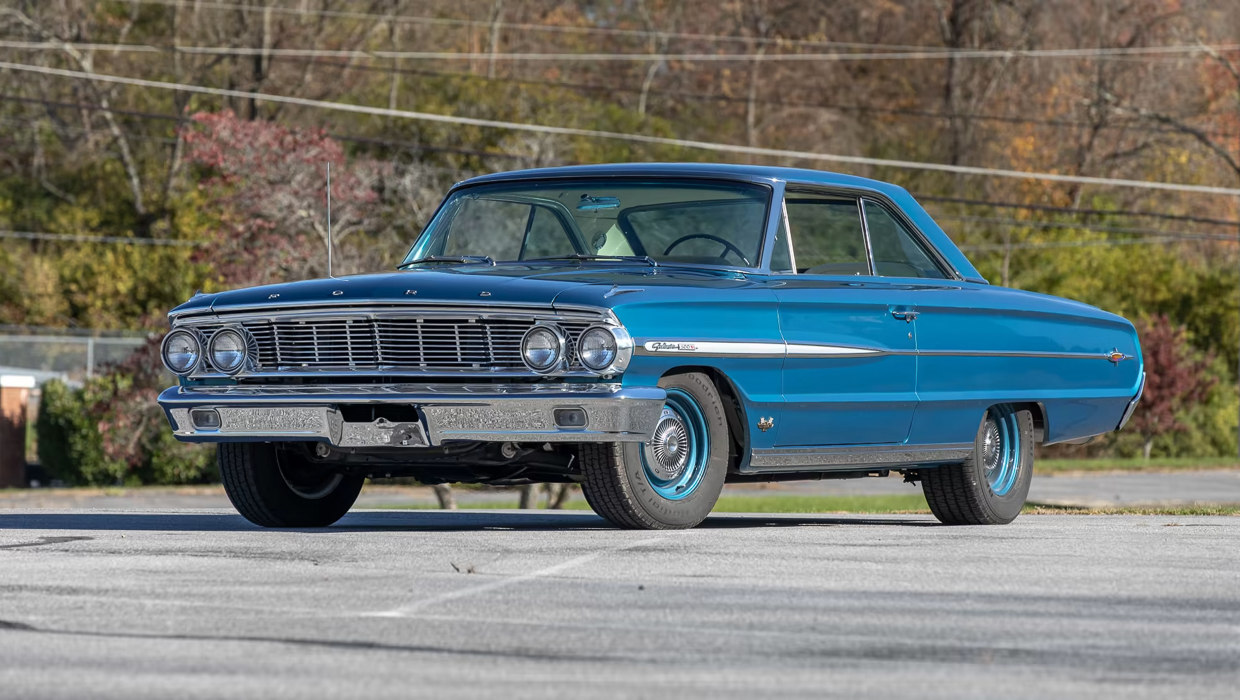
Report by Eddy Eckart
find more news here…











